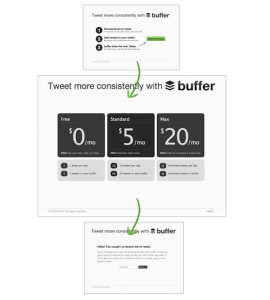— April 12, 2018

geralt / Pixabay
You’ve watched this employee for a while now. She consistently hits her goals, asks for more responsibility and shows you she can be trusted. Giving her that promotion was great for the team…or was it? Excelling at a job doesn’t always translate to excelling at supervising that job. She is now responsible for the success of not just herself, but her new team. As a new manager, giving feedback to her team has become the hardest part of her job, and the results are unsettling. However, the learning curve in managing a small staff for the first time can be accelerated with the right guidance from the leadership team. Start by training your new managers to give better feedback.
92% of employees believe properly delivered negative employee feedback is effective at improving performance. A young staff, especially if there any Millennials or Gen Z in the bunch, is already craving feedback from day one. Use this to your advantage. Instill in your new manager that feedback is wanted, needed and nothing to avoid. The first one-on-one can be scary, but after a while, giving feedback becomes the new norm. What is practiced can be improved.
The Situation
It’s a few weeks in and a situation has arised. Performance has been slacking by one employee and the issue must be confronted. Before loosening the reins, train your new manager using the tips below to prepare the supervisor for her first management test.
Fast, But…
We have heard it before and we’ll hear it again – waiting for the annual review to discuss an issue is too late. Reacting to an issue before it gets worse or repeats is necessary to build good habits – and to not let a situation grow and fester. Feedback should be timely in the sense it should be delivered while the situation is fresh and remembered clearly. However, giving feedback on-the-spot runs the risk of overreacting in the heat of the moment.
Tip: Implement a waiting period, if applicable, to all new managers (and maybe even your tenured folk). The pause doesn’t have to be long or even more than a few hours after a situation unfolds, but it will allow time for tempers to simmer and preparations to be made.
Prepare & Schedule
Giving constructive feedback might seem simple and straightforward, but in reality can be very rough waters to navigate, especially for a new, less experienced manager. 37% of managers report being uncomfortable giving feedback, and a whopping 69% report being uncomfortable communicating with their employees in general. Take the time to prepare for the intended one-on-one. Suggest that the new manager schedule a time within the following few days. Ensure that the meeting time works for both parties involved, not just the manager. Remember, asking a subordinate to immediately address issues with no warning can leave the employee panicking, unprepared and on unequal footing. Instead, encourage your new manager to clearly explain the purpose of the meeting when arranging a time.
Tip: Create a culture of preparedness, communication and professionalism. Urge managers schedule microfeedback sessions that will create performance touchpoints and build a stronger bond between the leader and employee.
Give Smart Feedback
Just one out of five employees strongly agree their performance is managed in a way that motivates them to do outstanding work. A now colloquial framework to follow is S.M.A.R.T. When assessing performance, feedback should be specific, measurable, achievable, relevant and time-based in order to cover all bases.
Specific – What exactly transpired here? Name the date, who with and what happened so there is no ambiguity on the situation. Vague comments about performance can lead to a misunderstanding and a misguided course correction. Keep the feedback specific to work – nothing personal.
Measurable – Is the feedback subjective or objective? Can you measure the outcome by past metrics or an agreed-to goal? Try to use as many concrete numbers or examples as possible. The indented outcome should be clear so the employees know what success will look like.
Achievable – Goals should be far enough away to be attainable but close enough to motivate. Set the team objectives together with both the management team and employees to work on an agreed-upon goal.
Relevant – Strong objectives align with the strategic direction of the company. Uncertainty or doubt on a target and how it will contribute to the organization can lead to confusion and ultimately, disengagement.
Time-based – Set a timeline for when the objective should be achieved. A timeframe will bring a sense of urgency and focus on the goal.
Tip: Print a sign, write it on a whiteboard, send it in an email, jot it down on a sticky note. Communicate the S.M.A.R.T. framework to all new employees as a guideline when preparing and giving feedback. It will allow them to form their own performance notes, creating a more enriching conversation.
Keep It Focused
“ If you’re going to give feedback, it is best to have some examples of what you’re referring to and your advice on how they could of done it differently;” – Lauren McGoodwin, founder and CEO of Career Contessa.
This isn’t a performance review. This is a one-on-one change to give microfeedback. “Micro” means small and focused. A microfeedback session should stick to one thing at a time and stay there. Don’t let the momentum of the meeting open the floodgates for general performance advice or unrelated anecdotal examples. Keep it to the time scheduled and wrap it up once the issue has been addressed and understood.
Tip: Keep your manager focused by reminding them of the purpose of microfeedback. Ask for a summary before and after the meeting to snuff out any bad habits.
Positive Notes
Employees whose managers regularly communicate with them are nearly three times more engaged than those with managers who don’t regularly communicate.
Giving constructive feedback well requires skill, but so does taking it. Hearing what has transpired and how one has possibly failed isn’t the easiest pill to swallow. End the meeting on positive notes to remind the employee why they are a trusted and valued member of the team. Take a step back, and offer the big picture view. Resurface quality past performance by the individual as an example to emulate what was achievable in the past.
Tip: Ever heard of the ‘Oreo Method?’ It’s sandwiching a constructive center with a positive note top and bottom. Microfeedback should be a balance, not an attack.
Training
Employees who strongly agree that their manager holds them accountable for their performance are 2.5 times more likely to be engaged in their job, according to Gallup research. And employees who feel adequately recognized are half as likely as those who don’t to say they’ll quit in the next year.
Just as your new managers are evaluating their employees, you as their manager, are evaluating them as well. Praise them for giving quality feedback and construct them when necessary for situations that could have gone a different way. Your new managers should be monitored in their early performance feedback so good habits can be reinforced and bad habits don’t bud.
Business & Finance Articles on Business 2 Community
(79)
Report Post





